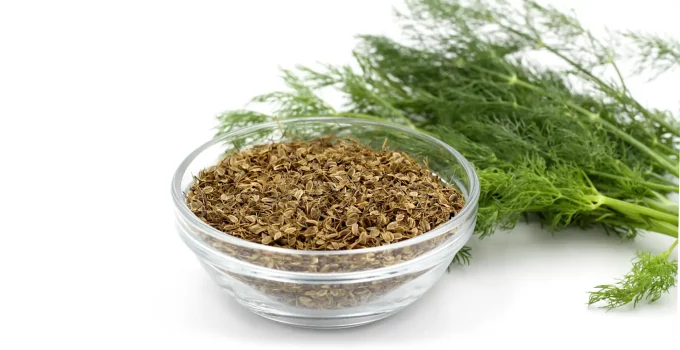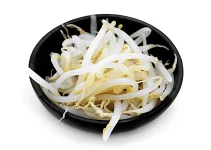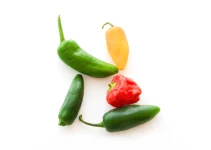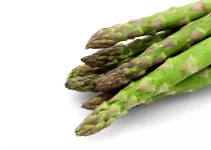Making a dill seed vs dill weed comparison means comparing the plant with the seeds it produces during the ripening stage. The seeds are the fruits, the dried ripe fruits, of the dillweed.
Thus, the order in our comparison is that the dill weed produces dill seeds. Seeds are produced by plants for their reproduction. That’s how we usually grow most plants, from their seeds.
However, we’re not actually here to learn how to grow dill weed from dill seed.
My interest for a dill seed vs dill weed comparison is for learning how we can use dill seed and dill weed in our cooking.
It’s truly fascinating that we can use some seeds for our cooking, like it’s the case with dill seeds, coriander seeds, fennel seeds, anise seed, poppy seeds, pumping seeds, caraway seeds, chia seeds, sunflower seeds, sesame seeds, mustard seeds, etc.
On the other hand, we’re not going to do anything with cucumber seeds, except to grow new cucumber plants to produce new fruit.
Chilis are dried and ground/crushed so we get to use both really tiny pieces of chilis and their seeds, products that are known as chili flakes or red pepper flakes. I love the way red pepper flakes look thanks to those seeds.
We also use seeds to grow legume, grain and vegetable sprouts, which is another useful ingredient we can do to enhance some dishes.
Table of Contents
Dill Seed vs Dill Weed: What Are They?
Getting back to our dill seed vs dill weed comparison, we established that one produces the other. We can call the plant dill plant or we call it dillweed. For me, these two are the same.
The dill plant produces dill seeds during ripening. We can gather the seeds to use them for pickles and in our cooking.
But we can also save some seeds to grow new dill plants. If we grow them indoors, we can always have access to fresh dill weed.
Others make another distinction: the plant is called dill plant, while the dill weed refers to the leaf and stem of the same plant.
Some people prefer that separation, calling dill weed also leaf dill. However, we can also use dillweed to refer to the dill plant in its entirety.
Still, if you want to make a clear distinction between the dill plant and dill weed, we can say that dill weed refers to the leaf and stem of the dill plant.
How to collect dill seeds from the dill plant
If you’ve grown your own dill plants, you can collect the seeds to use them in your cooking and to make delicious pickles together with other spices, like mustard seeds, bay leaves, black peppercorns, etc.
1. Cut the flower stalk before the seeds begin to ripen and turn a tan color. Don’t cut the stalks near the flowers because the stalks need to be have a satisfying length so that you can hang the flower heads upside down.
2. Place a paper bag around the flower heads. Fasten it to the stalks. Add a few holes in the sides of the bag to ensure air circulation.
3. Hang the stalks upside down. Preferably, in a warm, well ventilated room away from sunlight. The pantry is a good place but you can even tie them to a cupboard in the kitchen.
4. The seeds will drop by themselves as their start to ripen.
5. Store the seeds in airtight containers. They will last about a year if you store them away from heat and light.
6. Just make sure that the seeds are dry before storing them. You can dry them on paper towels away from sunlight if you think that they’re not dry.
How do dill weed and dill seed taste?
The flavor of dill weed leaves is described as being somewhere between anise, parsley, and celery. Others will say that it has a taste reminiscent of anise and parsley.
We can also describe the taste of dill as being fresh, citrus-like and with a slightly grassy undertone. I think we could use the same words to describe parsley, too.
For me, the winning combination is a dill coleslaw salad. I love the flavors of dill and cabbage together. But it also pairs well with garlic, mint, cilantro, fish (salmon), meats, soft cheeses, egg dishes, beets, carrots, cucumbers, potatoes, etc.
And dill can be used as a substitute for parsley.
Dried dill seed is considered to be even more pungent. Whenever I smell dill seed it actually reminds me of the smell of pickles. I don’t if that happens to anyone else but, for me, dill seeds smell like the best pickles. I love their smell.
Dried dill seeds are easily recognizable. They’re wide, flat and tear-shaped. They have light brown borders and dark, oak-like centers.
Dill seeds are used for pickling mixes, breads, and seasonings for meat.
One of the most important statements that I want to make in this dill seed vs dill weed comparison is this: the flavor of dill seeds is reminiscent of dill weed but some people might think that they have a more similar flavor to caraway seeds than to dill weed.
This statement will matter when we answer the following question.
Can we use dill weed instead of dill seed?
We said that the flavor of dill seeds is more reminiscent of caraway seeds than of fresh dill weed.
Thus, my first recommendation is to use caraway seeds if you don’t have any dill seeds.
Another type of seed you can use are celery seeds.
However, if you don’t want to use seeds but you want to use fresh herbs, then dill weed can be used instead of dill seed. They do have something in common when it comes to flavors, it’s just not as much as you might expect.
However, consider how different coriander seeds can taste from cilantro and you’ll quickly understand that the seed and the fresh herb might not have all that much in common in some cases.
Can you use dill seed instead of fresh dill?
When I wrote my article on the best dill substitutes, I mentioned that dill seed is one of my favorite substitutes.
However, I still consider that dry dill weed is a better substitute for fresh dill when we’re making pickles.
If we don’t have any dry dill weed for pickles, we can certainly use dill seeds.
Dill seeds can also be ground in a mortar and pestle and used for a variety of dishes from dressings to soups to stews to sauces.
In order to use dill seed instead of fresh dill, we can follow these measurements:
- 1 teaspoon dill seed = 1 fresh dill umbel (dill head)
- 1 tablespoon dill seed = 3 dill heads
- ½ ounce (1 tablespoon) dill seed = ½ cup fresh dill (8 tablespoons)
However, you should keep in mind that the seeds have a bitterness to them that is lacking in dill weed.
But if you only want to use fresh herbs to substitute dill weed leaves, then you can use either tarragon or parsley. Thyme can also work to replace fresh dill.
Dill Seed vs Dill Weed: Which Are the Best Substitutes?
Let’s see what other ingredients we can use if we don’t have fresh dill or dill weed or dill seed.
Before talking about substitutes for all these dill forms, we should keep in mind that the flavor of dill weed leaves is described somewhere between anise, parsley, and celery.
Substitutes for fresh dill
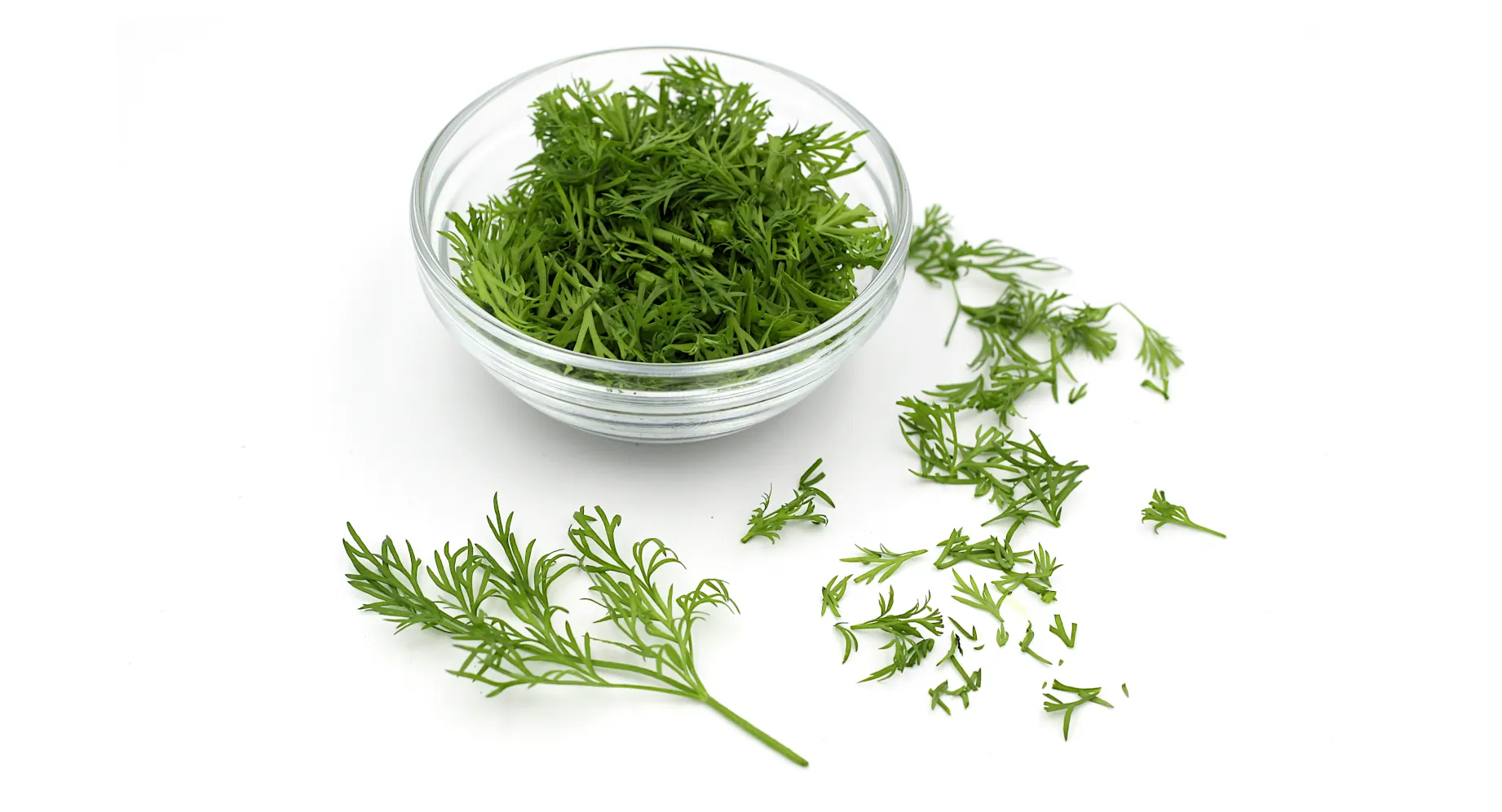
If we want to substitute fresh dill with other fresh herbs, then we say that there are two main herbs we can use: parsley and tarragon.
Some would say that tarragon is the best fresh herb to substitute fresh dill. However, we must also establish that tarragon and dill don’t really share much when it comes to flavor. All herbs have their unique flavors and that’s why it’s not easy to find substitutes for fresh herbs.
I also mentioned parsley because not everyone can easily find fresh tarragon whenever they want. It’s easier to find fresh dill than it is to find fresh tarragon. But fresh parsley is even more common than the other two herbs.
If you don’t care about using fresh herbs, you can use dry dill weed or dill seed according to the measurements I’ve mentioned above.
Substitutes for dill weed garnish
If we want to use a small leaf of dill to garnish a plate but we don’t have any, then we can use something that looks very similar to this herb but tastes completely different.
Fennel fronds look pretty much identical to dill weed leaves.
The feathery green leaves of both dill and fennel work beautifully as garnish.
Thus, if you only need it for garnish, we can cut from fennel fronds. The look is identical but the taste is not at all.
In cooking, I would say that fennel fronds can only be used as a substitute for fresh dill when cooking salmon or fish. That’s because both plants pair well with fish.
Besides the similar look between dill weed leaves and fennel fronds, another thing they have in common is that both belong to the Apiaceae family. Other plants in the same family are anise, parsley, coriander, cumin, caraway, etc.
Substitutes for dill seed
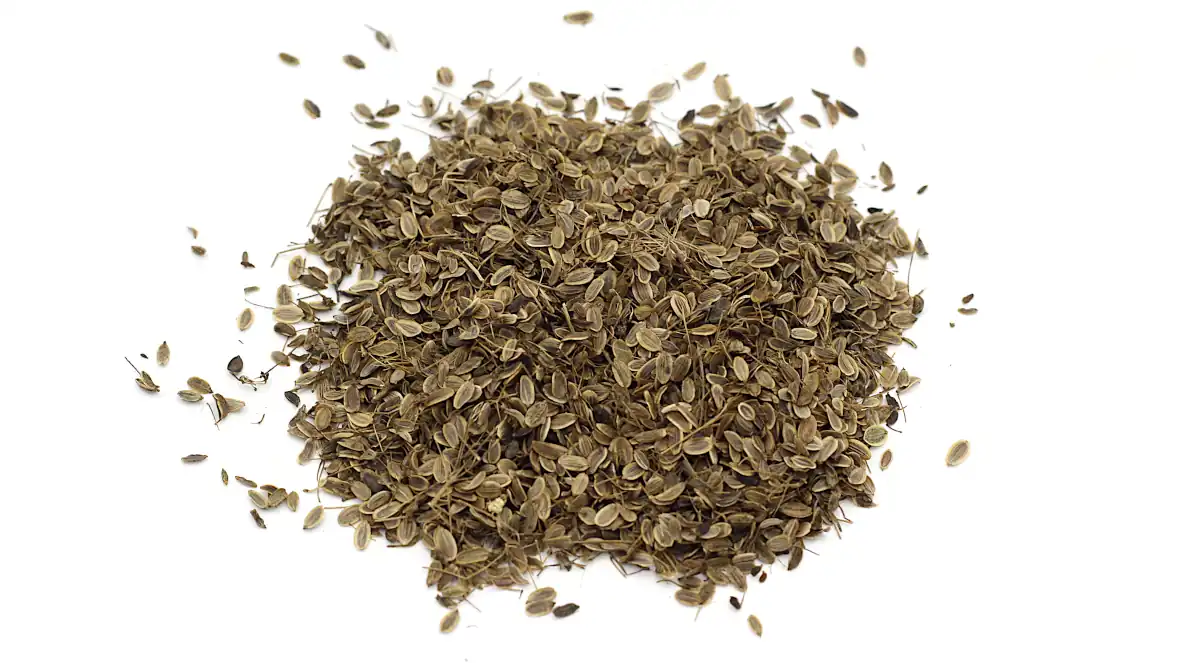
The last substitutes we need to talk about in our dill seed vs dill weed comparison are those for the seeds.
My first recommendation would be to use caraway seeds. They’re the most similar in taste to dill seed.
We can also use celery seeds.
Dill seed is used in the spice mix ras el hanout
Ras el hanout is a Middle Eastern spice blend used in tagines, soups, rice dishes, vegetable dishes, etc.
Frankly, there are so many variations for this Moroccan spice mix that you’ll find a lot of them, even made without dill seed at all.
We could say that there’s not only one traditional recipe for this Moroccan spice blend. Some are definitely a lot more simple with just a few spices added to the mix. Like this one here.
It only calls for these spices: coriander seeds, cumin seeds, red pepper flakes, cinnamon, salt, dried rose petals, ground cardamom, paprika, ground ginger, ground cloves, cayenne, ground turmeric, allspice.
However, if you want to make a more complex ras el hanout at home, I found this recipe.
The list for the spices used for this particularly complex ras el hanout is a long one: saffron stigmas, sweet paprika, ground cumin, ground ginger, coriander seed, cassia, ground turmeric, fennel seed, allspice, ground green cardamom seed, whole dill seed, ground galangal, ground nutmeg, ground orris root, ground bay leaf, ground caraway seed, cayenne pepper, ground cloves, ground mace, ground cubeb pepper, brown cardamom pod.
All in all, what we learned from this dill seed vs dill weed comparison is that we cannot use the two interchangeably even if they belong to the same plant but there are other suitable substitutes for both parts of the dill plant.

